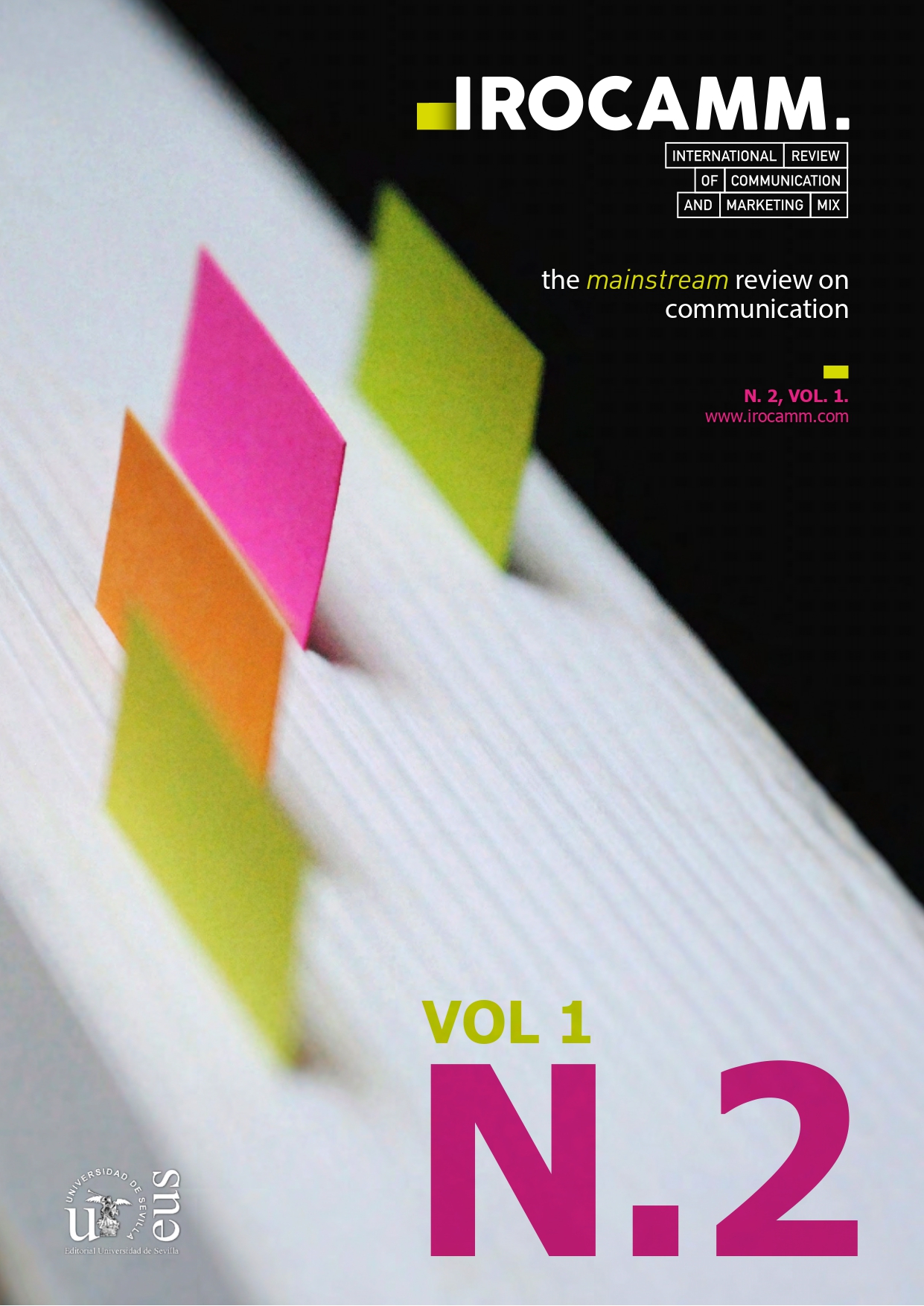Abstract
Digital Marketing have revolutionized the way companies communicate and interact with their publics, in particularly in the Fashion Business. The use of digital communication on a daily is increasingly intense, which leads companies to work the digital business strategy around the objectives, as well as incorporating digital methods into the objectives. According to Hamel, “The advantage of the competitiveness comes from a technological introduction and the constant adaptation along the time to the technological evolution inserted in the strategy of the organization.”
This research is a qualitative analysis to understand what are the digital factors that contribute to sustainable competitive advantages of organizations which can support strategic and future actions.
References
Ansoff, H. (1957). Strategies for Diversification. Harvard Business Review, pp.113-124.
Berthon, B., Pit, L and Watson, R. (1996) Resurting W3: research perspectives on marketing communication and buyer behaviour on the World Wide Web. International Journal of Advertising, 15, 287-301
Brown, E. (2012). Working the crowd. London: BCS.
Campbell, D. and Wright, R. (2008). Shut-Up I Don't Care: Understanding The Role Of Relevance And Interactivity On Customer Attitudes Toward Repetitive Online Advertising. Journal of Electronic Commerce Research, [online] 9(1), pp.62-76. Available at: https://search-proquest-com.gcu.idm.oclc.org/docview/236659282/abstract/D726AF934ED544F1PQ/1?accountid=15977 [Accessed 14 Aug. 2017].
Chaffey, D. and Ellis-Chadwick, F. (2012). Digital marketing. 1st ed. Pearson Education M.U.A.
Chaffey, D. and Ellis-Chadwick, F. (2016). Digital marketing strategy, implementation and practice. 5th ed. Harlow (GB): Pearson.
Chaffey, D. and Smith P.R. (2013) eMarketing eXcellence: Planning and Optimizing your digital strategy, 4th Edition, Butterworth Heineman (available online)
Deighton, J. (1996) The uture of interactive marketing. Harvard Business Review, November-December, 151-62
Digitaldayresearch.co.uk. (2017). Home | Ofcom. [online] Available at: http://www.digitaldayresearch.co.uk [Accessed 11 Jul. 2017].
Easey, M. (2009). Fashion marketing. 1st ed. Ames, Iowa: Wiley-Blackwell.
Eid, R. and Trueman, M. (2002). The Internet: new international marketing issues. Management Research News, 25(12), pp.54-67.
Geyskens, I., Gielens, K. and Dekimpe, M. (2002). The Market Valuation of Internet Channel Additions. Journal of Marketing, 66(2), pp.102-119.
Hamel, G., (2007). The future of management, Harvard Business School Press.
Harris, L. & Denis, (2008) Marketing the e-Business, Routeledge
Hines, T. and Bruce, M. (2008). Fashion marketing. 1st ed. Enskede: TPB.
Hollensen, S. (2012). Essentials of global marketing. 1st ed. Harlow [etc.]: Pearson Education.
Lea-Greenwood, G. (2013). Fashion marketing communications. Chichester: John Wiley & Sons, Ltd.
Leonardi, P., Huysman, M. and Steinfield, C. (2013). Enterprise Social Media: Definition, History, and Prospects for the Study of Social Technologies in Organizations. Journal of Computer-Mediated Communication, 19(1), pp.1-19.
Mathur, U. (2008). International marketing management. 1st ed. Los Angeles [u.a.]: SAGE Publ.
Poon, S. and Jevons, C. (1997). “Internet Enabled International Marketing:A Small Business Network Perspective”. Journal of Marketing Management 13, pp.29-42.
Quelch, J.A. and Klein, L.R. (1996). “The Internet and International Marketing”. loan Management Review (Spring), pp.60-75.
Rowley, J. (2002) Synergy and strategy in e-commerce. Marketing Intelligence and Planning, 20(4), 215-20
Ryan, D. (2016). Understanding digital marketing: Marketing Strategies for Engaging the Digital Generation. Kogan Page.
Samuel Craig, C. and Douglas, S. (2001). Conducting international marketing research in the twenty‐first century. International Marketing Review, 18(1), pp.80-90.
Singh, N. (2012). Localization strategies for global e-business. Cambridge: Cambridge University Press.
Wymbs, C. (2011). Digital Marketing: The Time for a New “Academic Major” Has Arrived. Journal of Marketing Education, [online] 33(1), pp.93-106. Available at: http://journals.sagepub.com.gcu.idm.oclc.org/doi/pdf/10.1177/0273475310392544.
Yudi Fernando, Norizan Mat Saad, Mahmod Sabri Haron, (2012) "New marketing definition: a future agenda for low cost carrier airlines in Indonesia", Business Strategy Series, Vol. 13 Issue: 1, pp.31-40, https://doi-org.gcu.idm.oclc.org/10.1108/17515631211194607
International Review Of Communication And Marketing Mix provides unrestricted access to its contents from the moment of publication in this electronic edition, and is therefore an open-access magazine. The originals published in this magazine are the property of the University of Seville and it is obligatory to cite their origin in any total or partial reproduction.' All content is distributed under a Creative Commons Attribution 4.0 (CC BY-NC-ND 4.0) license. This should be expressly stated in this way where necessary. You can consult the informative version and the legal text of the license.
The authors who publish in this journal agree to the following terms:
- The assignment of rights is made under the Creative Commons license.
- Authors may separately make additional arrangements for the non-exclusive distribution of the version of the work published in the journal (for example, placing it in an institutional repository or publishing it in a book), with an acknowledgement of its initial publication in this journal.
- Authors are allowed and encouraged to disseminate their work electronically (e.g. in institutional repositories or on their own website) before and during the submission process, as this can lead to productive exchanges, as well as earlier and more extensive citation of published work.
- The dissemination of the articles will be carried out on general social networks, ResearchGate, Mendeley, Academia.edu, Cosis, e-lis and other databases or full text repositories on the Internet with whom the journal establishes an agreement for their dissemination and visibility.
- Copyright is of two kinds: moral rights and economic rights. Moral rights are perpetual prerogatives, unrenounceable, untransferable, inalienable, unattachable and imprescriptible. Economic rights refer to the benefits obtained by the use or disclosure of the works. IROCAMM - International Review of Communication And Marketing Mix is exclusively authorized to make or authorize by any means the use, distribution, dissemination, reproduction, adaptation, translation or transformation of the work.
International Review Of Communication And Marketing Mix does not charge fees for submission of papers, nor does it charge fees for publication of its articles.

